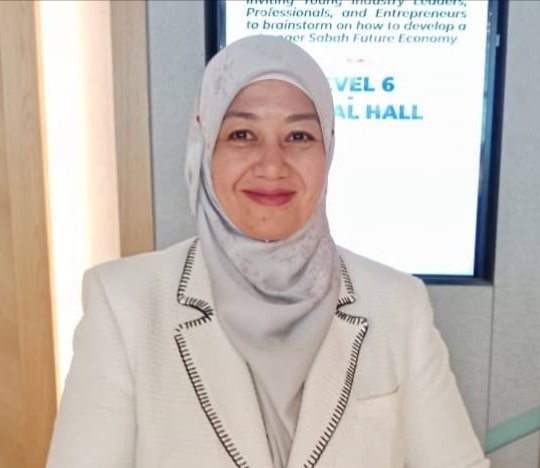KUALA LUMPUR : When the term “carbon credits” comes up, many Malaysians still shrug it off as complicated jargon. Yet the global carbon credit market could be worth as much as USD 1 trillion (RM4.7 trillion) by 2030, a figure larger than Malaysia’s entire economy today. The question is: is this really a trillion-dollar opportunity for Malaysia, or just another overhyped myth?
The truth is simple. Carbon credits are very real, very valuable, and Malaysia cannot afford to treat them lightly.
A carbon credit is not a gimmick or “green talk.” It is a certificate that represents one tonne of carbon dioxide kept out of the atmosphere. If a company say an airline or factory emits more than its allowable limit, it must buy credits to balance its emissions. Projects that protect forests, restore mangroves, or build renewable energy can generate those credits and sell them. International registries like Verra certify the credits to ensure they are real, measurable, and permanent. In everyday terms, think of it like trading clean air. Our forests are no longer just trees; they are financial assets the world is willing to pay us to preserve.
The global market for carbon credits is already expanding rapidly. Valued at USD 2 billion in 2022, McKinsey projects it could grow to USD 250 billion by 2030, while the World Bank and Trove Research estimate as much as USD 1 trillion under ambitious net-zero scenarios. Other nations are moving quickly. Indonesia launched its carbon exchange in 2023 and traded more than 460,000 credits within months. Africa has secured multimillion-dollar agreements with global technology companies to fund reforestation, while Brazil is weaving the Amazon rainforest into its international carbon finance strategy.
Malaysia has not been idle. In December 2022, Bursa Malaysia’s Carbon Exchange (BCX) held its first auction, selling 150,000 Verified Carbon Units (VCUs). Demand was higher than supply. A clear signal that the market is real and that buyers trust Malaysia’s projects. The Kuamut Rainforest Conservation Project in Sabah, which protects more than 80,000 hectares of forest, stands out. Certified under Verra’s Verified Carbon Standard and awarded Gold Level recognition for its climate, community and biodiversity impact, it produces premium-quality credits valued internationally. In 2025, Sabah went further by enacting the Climate Change and Carbon Governance Enactment, making it one of the first states in the region to regulate carbon rights, licensing, and benefit-sharing.
These are not myths. These are working examples that show Malaysia can compete and even lead if we act strategically.
Still, many Malaysians continue to view carbon credits with suspicion. For some, the concept seems too abstract, like a foreign idea detached from daily realities. For others, it is dismissed as corporate greenwashing. The reasons are clear: a lack of awareness about how the system actually works, uncertainty over national frameworks and ownership rights, and a corporate culture that often prioritises short-term profit over long-term opportunity. But while we hesitate, others are moving ahead and securing the rewards. As one sustainability analyst observed, it is like sitting on a gold mine but refusing to dig because you doubt the gold is real.
What makes this even more urgent is that carbon credits are no longer only about forests. New frontiers are emerging. Malaysia’s mangroves, seagrass and coastal ecosystems could produce “blue carbon” credits. Heavy industries could generate credits through carbon capture and storage (CCS) technology. There is growing talk of biodiversity credits, which assign financial value to protecting species and ecosystems. Even fintech and blockchain platforms are being built to ensure transparent, tamper-proof carbon trading. This is no longer just an environmental agenda, it is an economic one.
So where do we go from here? The first step is to develop a clear national framework that unites federal and state jurisdictions, supported by transparent governance and benefit-sharing mechanisms. This will give investors the clarity and confidence they need. The second is for government-linked companies and large corporates to step forward. Too often, carbon credits are treated as CSR add-ons. They must instead be seen as part of core business strategy, a new revenue stream and a driver of competitiveness. Those who act early will attract international partners and set the standard for others to follow. The third step is awareness and education. The greatest myth we must dispel is that carbon credits are jargon. Malaysians, from the boardroom to the kampung, need to understand that this is not only about the environment but about livelihoods, investment, and Malaysia’s future position in the global economy.
Carbon credits are not a myth. They are a trillion-dollar opportunity hiding in plain sight. Malaysia already has the resources, the credibility, and the early success stories. What we need now is the will to scale up, to move faster, and to lead.
The bus is already moving. The question is not whether carbon credits are real or not, but whether Malaysia will get on board in time, or stand by as others drive away with the profits.
By Nirvana Jalil Ghani – BNN






